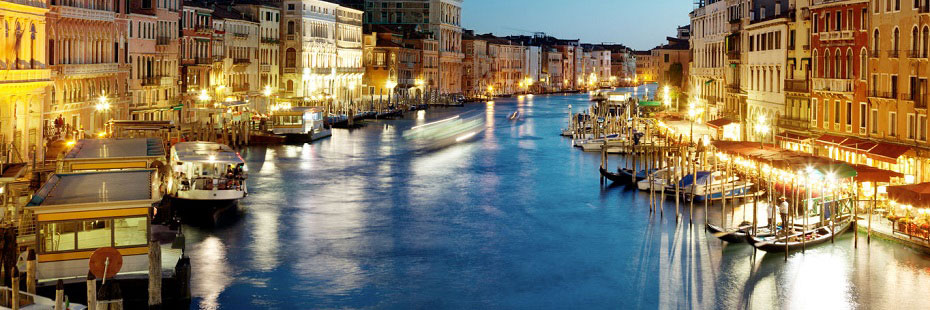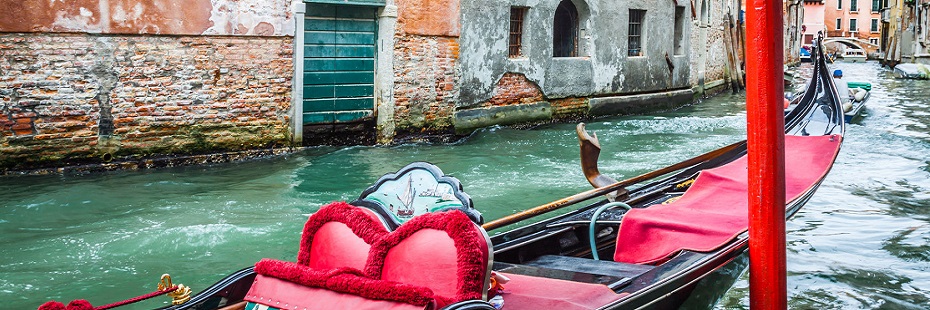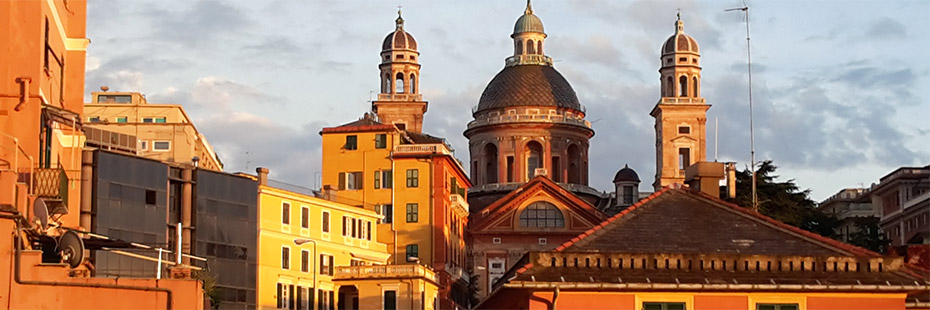| L'intellettuale cittadella di Parma ha tre eroi: il pittore Correggio, il compositore Giuseppe Verdi e il direttore d'orchestra Arturo Toscanini. I parmensi parlano dei loro eroi come se fossero ancora vivi, a passeggio fra di loro nelle antiche strade di pietra. Il passato è sempre presente in questa moderna città medievale. | The cultural citadel of Parma has three heroes: its painter Correggio, its composer Giuseppe Verdi and its conductor Arturo Toscanini. Parmese people speak of their heroes as if they were still among them, passing one another frequently on the cobble-stone streets. The past is always at hand in this modern-medieval city. |
 Parma: duomo |
|
| "La Certosa di Parma" è l'unico romanzo di Stendhal che non sia ambientato al presente. Egli scelse Parma come "luogo prediletto in cui imporre il passato sul presente". Per lo scrittore francese la rinascimentale "cour de Parme" era il simbolo della vita di corte in generale. Oggi Parma riflette ancora questa confusione temporale, in cui il passato sembra presente mentre, a volte e in alcuni posti, il presente è assente. | "La Chartreuse de Parme" is Stendhal’s only novel not set in the present. He chose Parma as the proper place to superimpose the past on the present. For that French writer, the Renaissance "cour de Parme" was symbolic of court life in general. Parma today still reflects that confusion of time, where the past seems contemporary, while at certain times and in some places the present is absent. |
| Per la sua ricerca di un'esistenza al passato, Stendhal trovò risposte adeguate nelle opere del suo pittore favorito, Correggio, il quale dipinse anche le figure più importanti velate nella nebbiolina che avvolge Parma molti mesi all'anno, cosicché anche queste sembrano essere distanti. Convinto che nessun francese potesse capire Correggio e il suo tempo, Stendhal traspose Correggio in letteratura e la Parma del XVI secolo nell'era napoleonica. | In his search for current existence in the past, Stendhal found answers in the works of his favorite painter, Correggio, who depicted even his primary figures veiled in the mist that shrouds Parma many months a year, so that they too seem to be in the distance. Convinced that no Frenchman could understand Correggio and his time, Stendhal transposed Correggio to literature, and the painter’s 16th century Parma to Napoleonic era. |
| Il colosso
della Parma Farnese
Il visitatore sale la grande scalinata del magnifico palazzo Pilotta, costrito da quell'alchimista, sensuale, amletico, primo Duca Farnese di Parma, che fu Ranuccio I. Il visitatore si muove, egli crede, verso l'entrata della più nuova, ultra-moderna galleria d'Italia. Ma invece, entra in un enorme, incomprensibile spazio che arriva da un luogo remoto del passato: egli si ferma all'improvviso, meravigliato e disorientato, perché la silenziosa e apparentemente abbandonata reliquia del passato è un vero "colpo di scena". |
The Colossus
of Farnese Parma
The visitor ascends the great staircase of the magnificent Palazzo Pilotta, built by that alchemist, sensualist, Hamlet-like, first Farnese Duke of Parma, Ranuccio I. He moves toward, he believes, the entrance of Italy’s newest, ultra-modern art gallery. But instead he steps into a huge incomprehensible space from somewhere in the past: the visitor stops abruptly, astonished and disoriented. Because the silent and apparently deserted relic of the past is a veritable "coup de theatre". |
 Teatro Farnese |
|
| Il fantasma del teatro Farnese, negli interni del palazzo Pilotta, serve da entrata e iniziazione alla Galleria d'Arte di Parma, che inizia ben oltre il vasto palcoscenico che si innalza a 60 metri di distanza. "Fantasma", perché il teatro è rimasto per la maggior parte del tempo chiuso, sin dal trionfo della sua apertura, il 21 dicembre 1628, per la celebrazione di un matrimonio e la creazione di un vincolo fra le famiglie dei duchi Farnese di Parma e dei Medici di Firenze. | The ghostly "Farnese Theater", in the bowels of the "Pilotta", today serves as an entrance and initiation to Parma's art gallery, that begins far behind the vast stage rising up 60 meters away. Ghostly because the theater has been mostly closed ever since its triumphant opening on Dec 21,1628, to celebrate the matrimonial link of the Farnese dukes of Parma with the Medici of Florence. |
 Palazzo della Pilotta |
|
| Il nuovo teatro meravigliò tutta l'Europa aristocratica che partecipò all'inaugurazione; si assistette a una stupenda esecuzione di sei ore di "Mercurio e Marte" con la musica di Monteverdi e le migliori voci europee, spettacolari macchinari teatrali, battaglie nell'arena riempita d'acqua e tutti gli dei dell'Olimpo. Uno spettacolo rinascimentale di cui si ebbe eco in tutte le cronache del tempo. | The new theater astounded aristocratic Europe who attended the inauguration: a stupendous six hour performance of "Mercury and Mars" with the music of Monteverdi, featuring the best voices of Europe, spectacular stage machines, battles on the water-filled arena and all the gods of Olympus. A Renaissance colossal that caused echoes in the chronicles of the era. |
| Il progetto del teatro Farnese divenne famoso addirittura prima che il teatro aprisse. Era la Bibbia dei teatri e la sua pianta fu attribuita da molti a Palladio o a Bernini. Il Teatro Reale di Vienna ne copiò i loggioni e più tardi i teatri francesi ne studiarono la tradizione scenica barocca. | Even before it opened, the Farnese theater project was famous. It was a Bible for all theaters, its plans attributed by many to Palladio or Bernini. The Vienna Royal Theater copied its loges, and later Paris theaters studied the Parma Baroque stage experience. |
| Eppure, sebbene esso fosse ritenuto come il più maestoso teatro europeo, il Farnese rimase principalmente un oggetto d'arte visiva. Poco dopo la sua inaugurazione, cominciò la decadenza della famiglia Farnese. Le commemorazioni per l'ascesa al potere della famiglia dei Borboni a Parma furono solo la quinta rappresentazione tenuta nel teatro in oltre un secolo. Dopo di che, chiuse per altri 200 anni prima di ospitare nuovamente nel 1913, le celebrazioni per il centenario della nascita di Giuseppe Verdi. | Yet, though it was hailed as "the most majestic theater in Europe", the Farnese was chiefly an object of visual art. Soon after its opening, the decadence of the Farnese family began. Commemorations celebrating the ascent to power of the Bourbons in Parma was only the fifth performance in the theater in over one century. After which it closed for another 200 years before hosting celebrations for the 100th anniversary of the birth of Verdi in 1913. |
| Dopo che una bomba distrusse il teatro durante la seconda guerra mondiale, sembrò che fosse definitivamente finito. Tuttavia, nel 1962, i parmensi, insicuri senza il loro teatro, lo restaurarono, ma solo perché rimanesse in silenzio e abbandonato nel centro della Parma moderna, quasi che fosse un "giocattolo per giganti". | After a bomb destroyed the theater in WWII, it seemed finally dead. But by 1962 the Parmese, insecure without their theater, had restored it, only to let it stand silent and abandoned in the center of modern Parma, like some kind of a "toy for giants". |
| Oggi appare come una conchiglia vuota, uno spirito del passato. Ma in realtà fu sempre una conchiglia. Nacque classico; il suo spazio originale era lungo 87 metri, largo 12 e alto 22. E tutto in legno. Gli spettatori del XVII secolo sedevano nei loggioni non sulle gradinate. Gli attori occupavano il palco, l'arena e la scalinata. Fu soprattutto un teatro rinascimentale di illusioni, un labirinto dove gli attori e gli spettatori si confondevano, dove figure di principi dipinte si assimilavano alle figure reali e le immagini degli attori dipinte sui soffitti guardavano il loro doppio reale che recitava nell'arena. Un gioco di specchi. Si era all'interno e all'esterno. Una confusione di teatro e vita. | Today it appears as an empty shell, a spirit from the past. But in reality it was always a shell. It vas born classical. Its original space was 87 meters long, 12 wide and 22 high. And all in wood. 17th century spectactors sat in the loges, not on the gradine. Actors occupied the stage, the arena in the center and the steps. It was above all a Renaissance theater of illusions, a labyrinth, where actors and spectators were confused, where painted figures of princes melted in with real ones, and images of actors painted on the ceiling looked down on themselves performing in the arena. A game of mirrors. One was both on the inside and outside. A confusion of theater and life. |
| Il visitatore di oggi non rimane meno stupito. Nonostante i 360 anni di quasi completa solitudine, il teatro Farnese conserva le tracce di un'antichità che Stendhal dipinse nella sua Parma. Niente e nessuno, né gli spettatori che siedono oggi sulle sedie dell'arena, né i precedenti concerti dell'orchestra di Arturo Toscanini, può eliminare il mistero del teatro Farnese. | The visitor today is no less stunned. Despite 360 years of near solitude, the Farnese theater conserves traces of an antiquity that Stendhal painted onto his Parma. And not even spectators seated on chairs in the arena today nor erderly concerts by the "Arturo Toscanini" orchestra eliminate the mystery of the Farnese Theater. |
| (continua) | (to be continued) |
TESTIMONIAL (more...):







